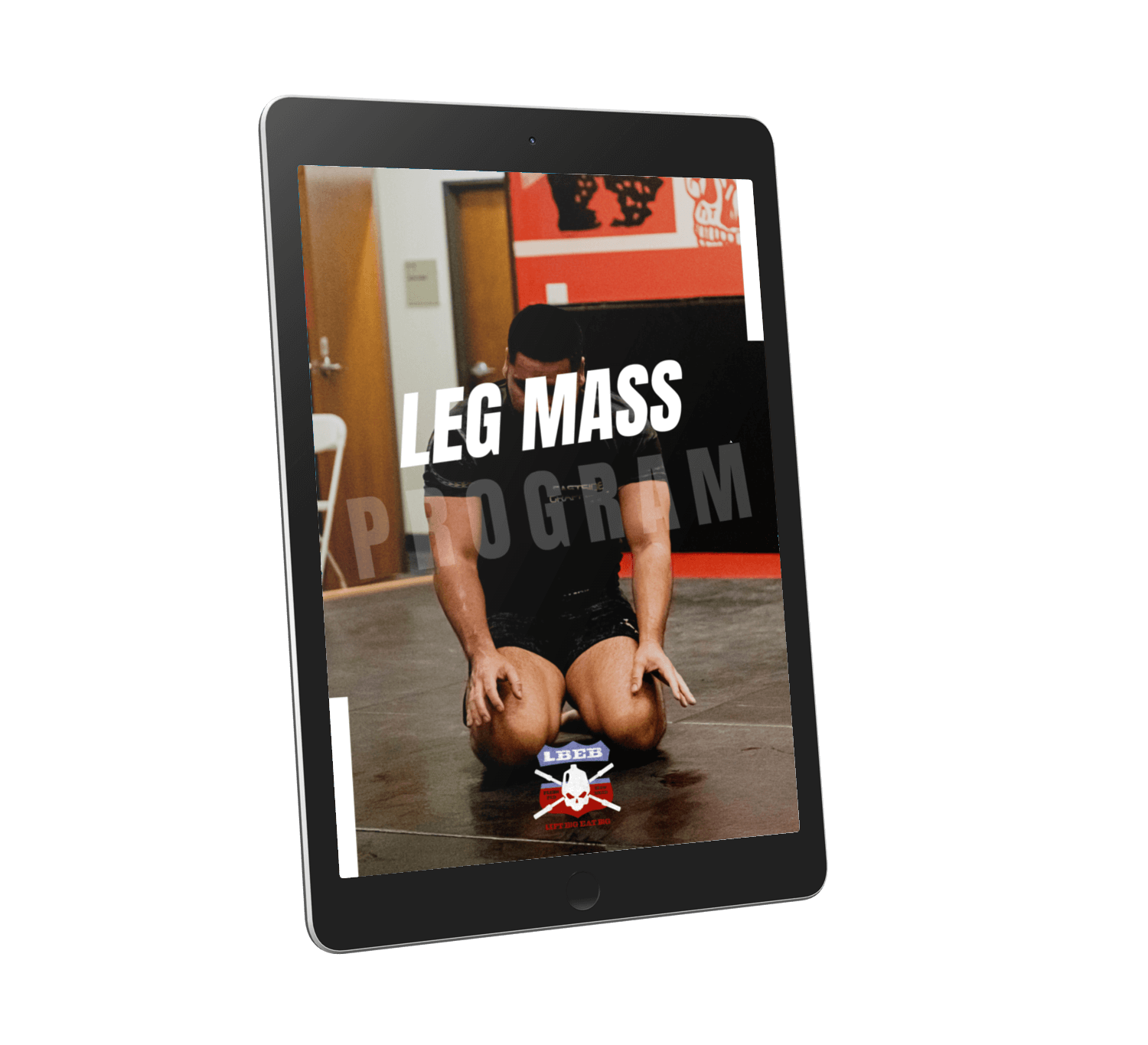Squats are labeled the king of quadriceps exercises. They’ve been used for centuries to grow thick legs. However, can you solely use the squat to grow big quads?
Squats are enough to grow big quads for the average person. However, if your goal is to step on stage as a physique athlete, you will need more than the squat to maximize quad development.
But why can squats be enough for quads for some people and not others?
Table of Contents
Are Squats Enough For Quads?
If we go by the pre-steroid era of the physical culturists and old-time strongmen, squats are more than enough to grow impressive quads. The average person can go hard on squats and build huge legs with hard and consistent work. Just search the likes of John Grimek and George Hackenschmidt.
However, suppose you’re looking to step on stage as a modern-day physique athlete. In that case, you’ll need to perform more than solely squats. Mainly because there’s a difference in muscle activation between closed (feet planted on the floor or platform) and open (feet freely off the floor) chain lower body exercises.
For example, closed chain exercise like the squat preferentially targets the vasti muscles of the quads. In contrast, open chain exercise like the leg extension preferentially targets the rectus femoris [1][2][3].

Therefore, to maximize quadriceps development for modern bodybuilding, you’ll need to perform both types of exercises.
Which Squat Variation Is Best For Quads?
There are three main squat variations:
- Low bar back squat
- High bar back squat
- Front squat

The low bar squat is used by Powerlifters to squat the most amount of weight. Since the bar sits below the upper traps, it shortens the lever arm from the hips to the bar. It results in more forward lean and greater glute and hamstring muscle activity [4].
Because of the forward lean, the high bar squat is superior for quadriceps activation compared to the low bar back squat due to a more upright posture and the knees tracking further forward over the toes [5].
When taking the front squat into account, we see similar quadriceps muscle activation at lighter loads compared to the high bar back squat and greater quad activation at similar loads [6][7].
Overall, the high bar back squat and front squat are the best squat variations for building massive quads. You will be able to use heavier loads with the back squat, potentially allowing for greater mechanical tension and, therefore, a better muscle-building response [8].
How Deep Should You Squat For Quad Growth?
“You only need to squat to parallel, bro.”
Or so the local commercial gym bro tells you. Or the guy who won’t be named that advocates only 90° joint angles for lifting (wtf?).
Anyway, if you want to maximize quad growth when squatting, squat deep. Ass to grass. Two recent systematic reviews and meta-analyses (the strongest form of scientific evidence) state full range of motion is more effective than partial range of motion in maximizing lower body muscle growth [9][10].
Therefore, bury your squats until your glutes hit your calves. If you struggle to hit that depth, you can elevate your heels by wearing Weightlifting shoes (my personal preference) or placing small plates under your heels.
Summary
For the average person looking to gain size, squats are enough to grow large quads and have been proven over decades. However, if your goals are specific to stepping on stage as a physique athlete, it is worth using other exercises to maximize quad development.
Grow Enormous Legs That Won’t Fit Your Jeans
A leg specialization program to bust through muscle growth plateaus and finally throw away those skinny jeans.
References
1. Zabaleta-Korta, A., Fernández-Peña, E., Torres-Unda, J., Garbisu-Hualde, A., & Santos-Concejero, J. (2021). The role of exercise selection in regional Muscle Hypertrophy: A randomized controlled trial.
2. Mangine, G. T., Redd, M. J., Gonzalez, A. M., Townsend, J. R., Wells, A. J., Jajtner, A. R., … & Hoffman, J. R. (2018). Resistance training does not induce uniform adaptations to quadriceps. PLoS One, 13(8), e0198304.
3. Ema, R., Sakaguchi, M., Akagi, R., & Kawakami, Y. (2016). Unique activation of the quadriceps femoris during single-and multi-joint exercises. European journal of applied physiology, 116(5), 1031-1041.
4. Glassbrook, D. J., Helms, E. R., Brown, S. R., & Storey, A. G. (2017). A review of the biomechanical differences between the high-bar and low-bar back-squat. The Journal of Strength & Conditioning Research, 31(9), 2618-2634.
5. van den Tillaar, R., Knutli, T. R., & Larsen, S. (2020). The effects of barbell placement on kinematics and muscle activation around the sticking region in squats. Frontiers in Sports and Active Living, 2, 172.
6. Gullett, J. C., Tillman, M. D., Gutierrez, G. M., & Chow, J. W. (2009). A biomechanical comparison of back and front squats in healthy trained individuals. The Journal of Strength & Conditioning Research, 23(1), 284-292.
7. Krzyszkowski, J., & Kipp, K. (2020). Load-dependent mechanical demands of the lower extremity during the back and front squat. Journal of Sports Sciences, 38(17), 2005-2012.
8. Schoenfeld, B. J. (2010). The mechanisms of muscle hypertrophy and their application to resistance training. The Journal of Strength & Conditioning Research, 24(10), 2857-2872.
9. Schoenfeld, B. J., & Grgic, J. (2020). Effects of range of motion on muscle development during resistance training interventions: A systematic review. SAGE open medicine, 8, 2050312120901559.
10. Pallarés, J. G., Hernández‐Belmonte, A., Martínez‐Cava, A., Vetrovsky, T., Steffl, M., & Courel‐Ibáñez, J. (2021). Effects of range of motion on resistance training adaptations: A systematic review and meta‐analysis. Scandinavian journal of medicine & science in sports, 31(10), 1866-1881.

